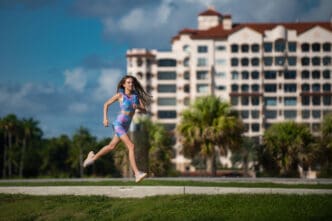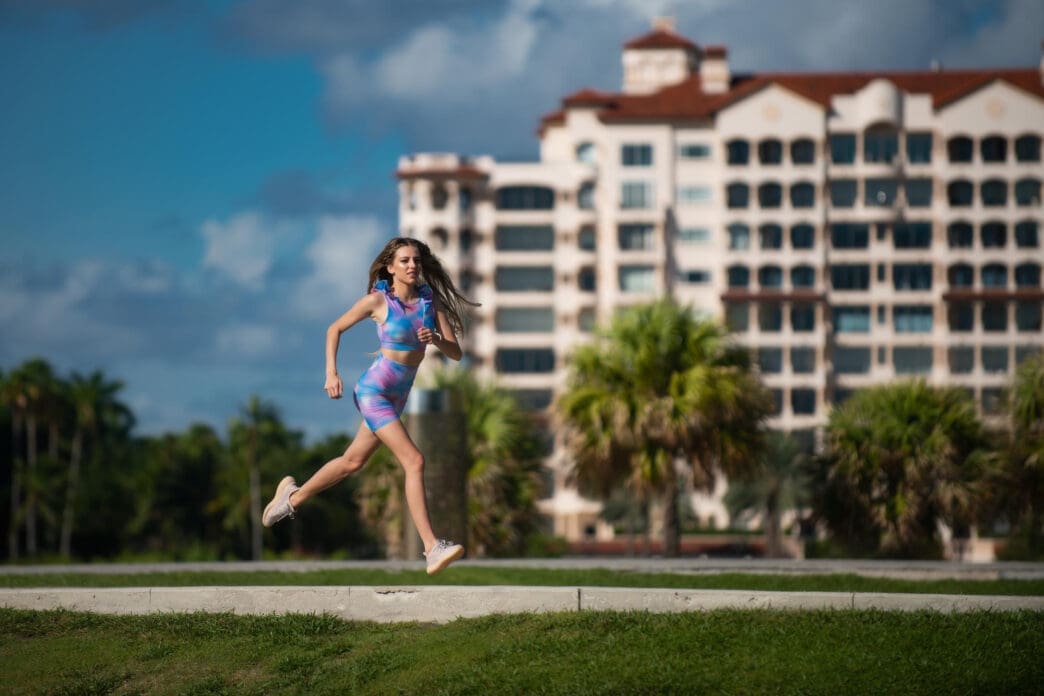A Quick Takeaway
The Story Behind the Trend
How to Make It Work for You
The Community View
Strides, often overlooked bursts of speed integrated into a runner’s routine, are a critical component for developing pace, improving form, and enhancing neuromuscular efficiency, particularly for athletes navigating Florida’s unique running environment. These short, controlled accelerations, typically 50-150 meters in length, are performed at a near-maximal effort, serving as a powerful tool to “wake up” fast-twitch muscle fibers and refine running mechanics. For Florida runners, mastering strides is not merely an option but a strategic necessity, offering a low-impact method to build speed and maintain optimal form despite the challenges posed by pervasive heat, humidity, and predominantly flat terrain. By consistently incorporating strides, runners in the Sunshine State can unlock greater speed, prevent performance plateaus, and cultivate a more resilient and efficient running stride.
What Exactly Are Strides?
Strides are brief, controlled accelerations that typically last between 15 and 30 seconds, covering a distance of 50 to 150 meters. Unlike an all-out sprint, the goal of a stride is not maximum speed but rather a smooth, powerful acceleration that allows the runner to focus on proper running form and quick leg turnover. They are usually performed at around 85-95% of a runner’s maximal effort, ensuring high-quality movement without excessive strain.
Each stride should be followed by a complete recovery period, typically a walk or slow jog, to allow the body to fully reset before the next repetition. This approach ensures that each subsequent stride can be executed with good form and high intensity. Strides are fundamentally about teaching the body to move efficiently at faster speeds, rather than building cardiovascular endurance.
The Unique Challenges of Running in Florida
Running in Florida presents a distinct set of environmental hurdles that can significantly impact a runner’s performance and form. The most prominent challenges are the relentless heat and pervasive humidity, which can elevate core body temperature rapidly and accelerate fatigue. This increased physiological stress often leads to a decrease in pace and a breakdown in running mechanics.
Beyond the climate, Florida’s largely flat topography means runners rarely encounter hills, which naturally build leg strength and provide varied speed work. Without these natural inclines, runners must actively seek out other methods to develop power and speed. The combination of heat-induced fatigue and a lack of diverse terrain makes it difficult for runners to maintain high-quality, efficient movement over sustained periods.
Why Strides Are a Game-Changer for Florida Runners
For runners in Florida, incorporating strides into their training offers a multitude of benefits that directly address the environmental and physiological challenges they face. Strides provide a targeted approach to developing speed and efficiency without the prolonged stress of traditional speed workouts in challenging conditions. They are a highly effective, low-risk method to elevate performance.
Enhanced Neuromuscular Coordination
Strides are excellent for improving the communication between the brain and muscles, known as neuromuscular coordination. By repeatedly practicing fast, controlled movements, the nervous system becomes more efficient at recruiting muscle fibers quickly. This translates to a more responsive and powerful stride, which is crucial for maintaining pace and finishing strong, especially when fatigue sets in under hot conditions.
Improved Running Form and Efficiency
One of the most significant benefits of strides is their ability to refine running form. During these short bursts, runners can consciously focus on elements like tall posture, relaxed shoulders, active arm swing, high knee drive, and a quick, light foot strike. Practicing these optimal mechanics at faster speeds helps engrain them, leading to a more efficient and less injury-prone stride during longer runs.
Speed Development Without High Impact
Traditional speed work, such as track intervals, can be very demanding, especially when performed in hot and humid conditions. Strides offer a way to develop speed and power without the same cumulative impact and cardiovascular stress. Their short duration and full recovery periods mean runners can access their higher gears and work on their top-end speed in a controlled manner, reducing the risk of burnout or injury.
Increased Leg Turnover and Cadence
Higher leg turnover, or cadence, is a hallmark of efficient running. Strides explicitly train the body to cycle the legs more quickly and lightly, reducing ground contact time. This is particularly beneficial in Florida, where a shuffling gait can develop due to fatigue from the heat; strides help counter this by encouraging a snappier, more dynamic foot strike.
Psychological Boost and Acclimatization
Injecting speed work into a training routine can provide a significant psychological boost, breaking up the monotony of easy runs and building confidence. For Florida runners, performing short, fast efforts also helps the body acclimatize to moving quickly in the heat, making longer race-pace efforts feel less daunting. It provides a mental and physical reminder of their speed potential.
How to Incorporate Strides into Your Training
Integrating strides into your existing training schedule is straightforward and highly effective. The key is consistency and proper execution to maximize their benefits. They are best performed after an easy run or as part of a warm-up before a harder session.
Frequency and Timing
Aim to incorporate strides 2-3 times per week, typically at the end of an easy run. After completing your regular mileage, find a flat, safe stretch of road, grass, or track. Ensure you are adequately warmed up before beginning, as strides involve higher intensity effort.
Proper Execution
Begin each stride with a gentle acceleration over the first 10-20 meters, gradually increasing your speed until you reach about 85-95% of your maximum effort for the middle portion of the stride. Focus intently on maintaining excellent form: run tall, keep your gaze forward, relax your shoulders, drive with your knees, and land lightly with a quick cadence. Decelerate smoothly over the final meters.
Number of Repetitions and Recovery
Start with 4-6 repetitions and gradually build up to 8-10 as you become more comfortable and your form improves. Crucially, allow for a full recovery between each stride. This means walking or very slowly jogging for 60-90 seconds, or until your breathing and heart rate have returned to near-normal. This ensures that each stride is performed with quality and focus.
Common Mistakes to Avoid
While strides are simple, several common pitfalls can diminish their effectiveness. The most frequent mistake is treating a stride like an all-out sprint; the focus should remain on controlled speed and form, not just raw pace. Another error is neglecting the recovery period, which leads to fatigue and poor mechanics on subsequent repetitions.
Runners should also avoid doing strides on completely tired legs or without a proper warm-up, as this increases injury risk. Finally, don’t overdo the number of repetitions too soon; gradually increasing the volume allows your body to adapt safely and effectively. Quality over quantity is paramount when it comes to stride work.
Unlocking Your Full Potential
For Florida runners, mastering strides is a non-negotiable step toward unlocking greater speed, refining running form, and building resilience against environmental challenges. By consistently incorporating these short, high-quality bursts of effort, runners can enhance their neuromuscular coordination, improve their efficiency, and develop a more dynamic and injury-resistant stride. Embrace the power of strides to elevate your running performance in the Sunshine State and beyond.







